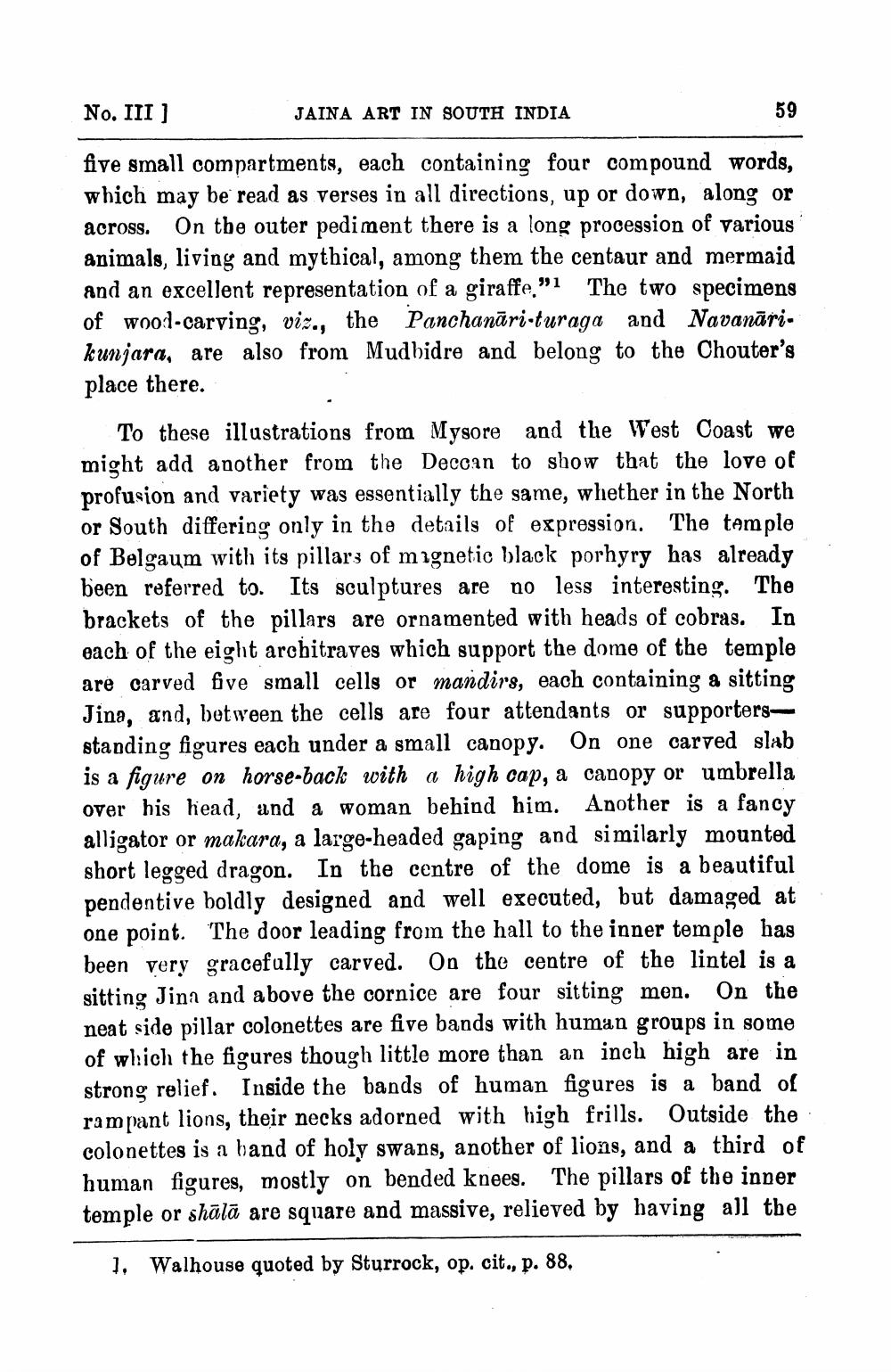________________
No. III ]
five small compartments, each containing four compound words, which may be read as verses in all directions, up or down, along or across. On the outer pediment there is a long procession of various animals, living and mythical, among them the centaur and mermaid and an excellent representation of a giraffe." The two specimens of wood-carving, viz., the Panchanari-turaga and Navanarikunjara, are also from Mudbidre and belong to the Chouter's place there.
1
JAINA ART IN SOUTH INDIA
59
To these illustrations from Mysore and the West Coast we might add another from the Deccan to show that the love of profusion and variety was essentially the same, whether in the North or South differing only in the details of expression. The temple of Belgaum with its pillars of magnetic black porhyry has already been referred to. Its sculptures are no less interesting. The brackets of the pillars are ornamented with heads of cobras. In each of the eight architraves which support the dome of the temple are carved five small cells or mandirs, each containing a sitting Jina, and, between the cells are four attendants or supportersstanding figures each under a small canopy. On one carved slab is a figure on horse-back with a high cap, a canopy or umbrella over his head, and a woman behind him. Another is a fancy alligator or makara, a large-headed gaping and similarly mounted short legged dragon. In the centre of the dome is a beautiful pendentive boldly designed and well executed, but damaged at one point. The door leading from the hall to the inner temple has been very gracefully carved. On the centre of the lintel is a sitting Jina and above the cornice are four sitting men. On the neat side pillar colonettes are five bands with human groups in some of which the figures though little more than an inch high are in strong relief. Inside the bands of human figures is a band of rampant lions, their necks adorned with high frills. Outside the colonettes is a band of holy swans, another of lions, and a third of human figures, mostly on bended knees. The pillars of the inner temple or shala are square and massive, relieved by having all the
1. Walhouse quoted by Sturrock, op. cit., p. 88.




